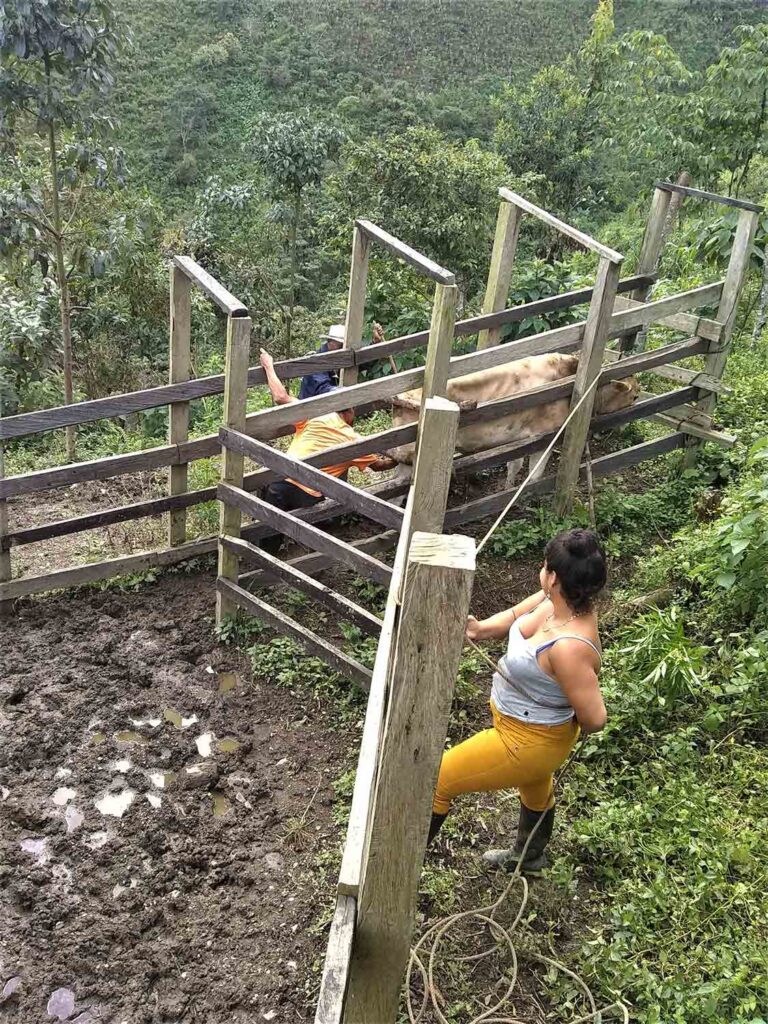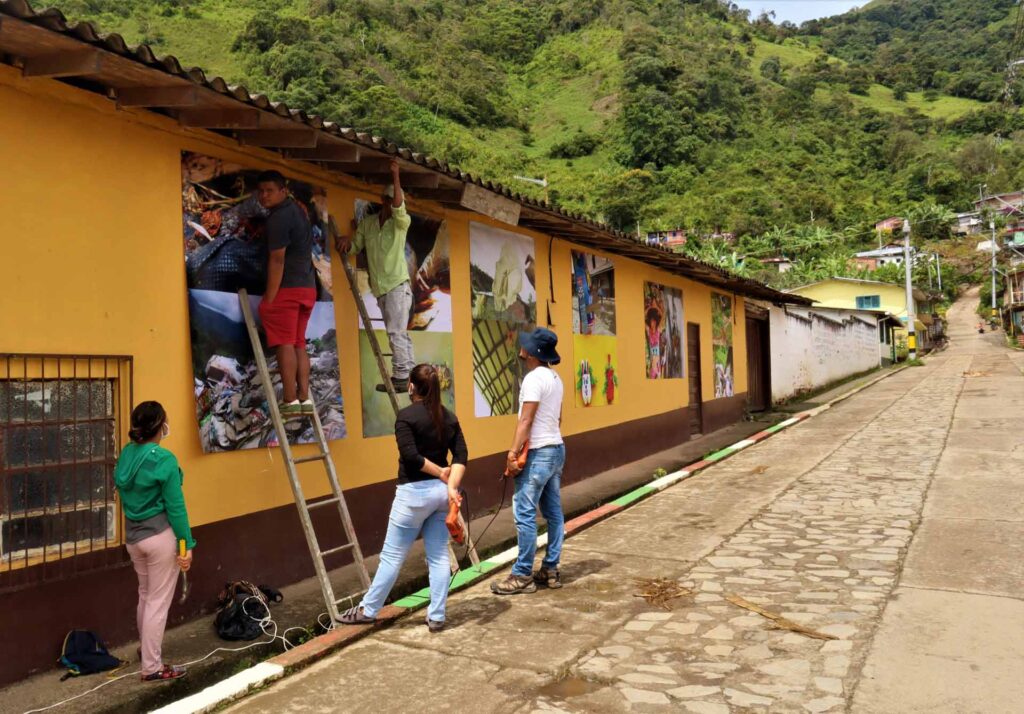Everyday Peace Indicators
Country: Colombia
Participants: Various conflict affected communities
Peace Indicator: No coca crops grow in the area.
Oh! We want to preserve peace and harmony in the community, we must plant cassava, banana, mango and lemon.
© Mery Liseth Gomez
After more than five decades of conflict, Colombia is in the process of implementing a historic peace accord, signed in 2016, which is seeing former Revolutionary Armed Forces of Colombia (FARC) combatants reintegrated through institutions and programmes geared towards peace and reconciliation. However, the peace process has been hampered by budget cuts and social discontent. New illegal armed groups have taken control of former FARC territories and for many rural communities whose lives have been affected over generations by war and overlapping forms of violence, peace is still far from being a daily reality. There has been as a steady increase in threats and deadly attacks on local actors involved in peace and reconciliation processes and the peace agreement has yet to translate into any significant material transformations for local communities.
Everyday Peace Indicators (EPI) is a peacebuilding non-governmental organization (NGO) that works with communities to generate their own indicators of complex ideas and concepts related to peace. Communities emerging from conflict work with EPI researchers, through focus groups and using participatory numbers methods, to identify the locally rooted signs and indicators of peace that are important to them, building meaning from the bottom up. Their indicators are used to inform peacebuilding policy and programming, and transformed into surveys, to monitor change and the impacts of peacebuilding interventions. In Colombia EPI decided to integrate photovoice with their everyday peace indicators methods in order to create opportunities for community-level dialogue around the everyday peace indicators and to amplify community voices by making their peace indicators visible through images and more communicable to policy audiences.

Peace Indicator: There are collective work groups among members of the community
’You need one hand to wash the other, and both to wash the face” is a saying that grandparents say. That’s what a minga is. When people don’t have the money to pay day labourers, they ask others to help them, and then the favour is repaid. In this way, a lot of farms and businesses have been saved from bankruptcy. A minga – or collective work group – saves lives and land, and protects democracy, justice and peace. Mingas are resistance..
© Paula Andrea Pino Sarrazola

Between 2020-23, EPI projects were undertaken in 6 rural communities in Antioquia, Cauca and Sumapaz. Responding to an open call in each village, participants engaged in five-six weeks of photovoice workshops. They selected individual and collective everyday peace indicators from the lists generated by their communities and made photo stories about their chosen indicators. The workshops culminated in exhibitions which saw their images hung on walls and buildings all over their villages.
Hanging the exhibition in San José de Urama, Antioquia, Colombia
© Manuela Muñoz
Evaluative research in the first two communities established that the photovoice process, which was designed to enhance existing community peacebuilding, amplified community peace by facilitating healing, enabling intergenerational dialogue, re-building of territorial pride and identity, and catalyzing community peacebuilding actions. While working in sensitive environments meant that the community photographers were limited in what they could capture in images, their photographs bring visibility to the specific stories and elements that are important to peace in their communities. Their images, which can travel easily whilst community members cannot, bring the voices of conflict affected communities before national and international audiences.

Peace Indicator: People with talents in the community have opportunities to leave the municipality to show their abilities.
In the municipality of Buenos Aires, there are many young people who have hidden talents. I mean that they have no opportunities to demonstrate their artistic abilities. The art of children, adolescents and young people must be prioritized. They are seeds that have to be sown in order to harvest a good future.
© Bryan Camilo Gomez
‘ … This town has experienced a lot of violence, we all know that, and … it is so different and beautiful to go out and to see the photos, to see the walls full of art and poetry. A few years ago, you would go out and see the walls full of death threats… Now they have been converted into a demonstration of art, happiness and hope. What there is now on these walls is a tribute to life.’
Peace Indicator: People in the community accompany wakes and burials when someone dies
Sister sister, lend me your stick strainer of Guayabo. Ay sister, how come, who has died? The neighbour’s sister. We are going to help to prepare the grave, lend me your white curtains and we’ll get the summer flowers, the coffee leaves and the myrtle. And also let’s inform the faithful people to accompany us in the wake.
© The Photography Collective of Veredas Del Sur

Peace Indicator: Ex-guerrillas build families
She wanted to be a sister in war and a daughter of whoever, and she went by an alias. Being there, she lived in horror, she came to know great pain. She was wounded in combat, and her heart was also wounded, because of course she couldn’t free herself from love. Now she carries real love with her, a pure and sincere love, a love for life. All there is to say is that they’re there, living among us, they rebuilt their familes and they’re helping to transform the community.
© Yesica Alejandra Zapata David


